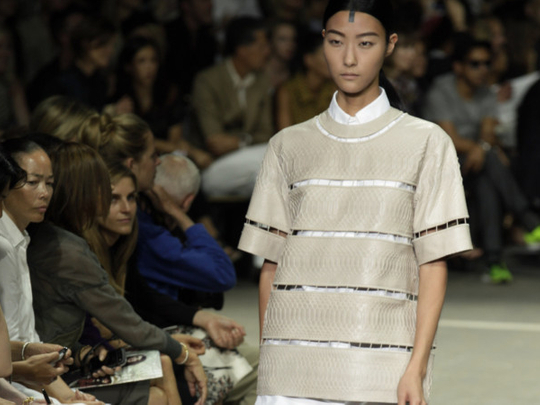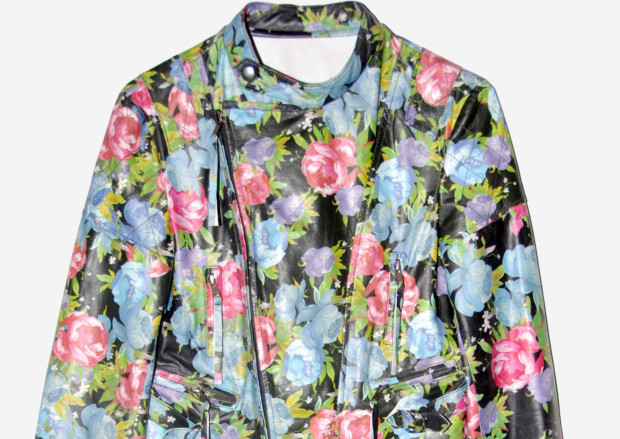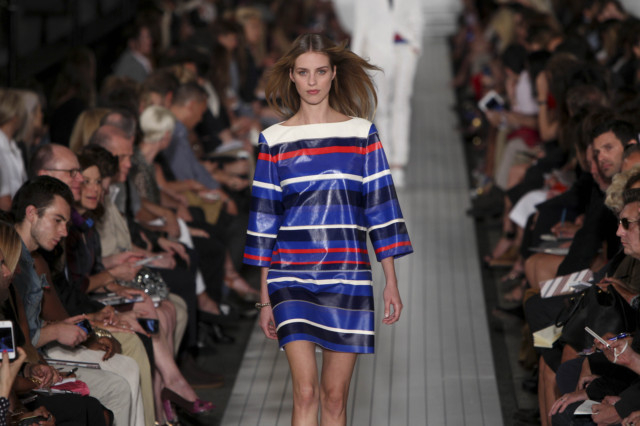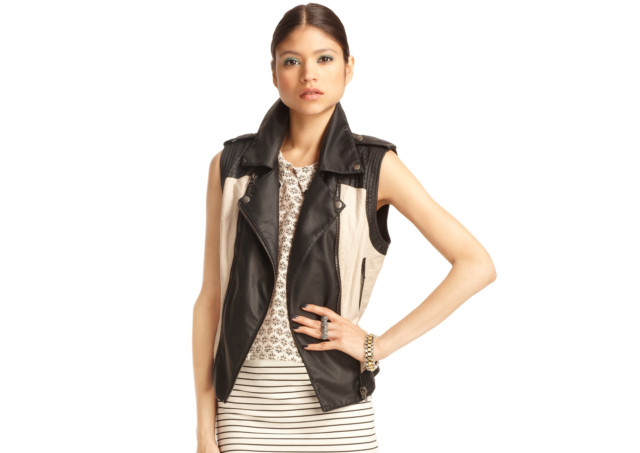
It turns out spring is leather weather — at least this year.
Don’t be frightened: This isn’t a heavy head-to-toe rock ‘n’ roll look. This is about leather done as easy and breezy as one would expect as we head into warmer, sunnier times.
It could be a jacket, but it also could be a dress or a vest, a button-down shirt or pants.
Maybe it’s light pink or the chic colour of stone, or maybe it’s perforated to give it a sporty vibe. There are paper-thin leathers and “vegan leathers”, the new industry way to say “pleather” or faux leather. Laser cutting can add airiness.
“What’s happened is that customers are responding to the luxuriousness of it,” says Tim Baxter, executive vice president of Macy’s fashion and product office.
Women started really embracing leather as an everyday fabric, not just a cool-kid statement, this past fall, and they’re not ready to give it up, he says. “The customer is shifting towards seasonless clothing. They want clothing they can wear at least eight or nine months a year, and leather is now one of those things she can wear most of the year.”
The customer also likes that leather takes pigment so well, and just as the season flips into spring, people are eager to wear cheerful, optimistic colours, even if the real-feel temperature doesn’t match the mood.
Marti Horwitz, designer of the Marti collection, says a leather jacket or vest is the perfect layering piece for the days the weather can throw anything at you. “It’s an instantly more glamorous look.”
Lambskin or goatskin is naturally thinner than cow hide, she explains, advising shoppers to keep that in mind as they set out on a spring shopping spree.
She’d take one of her floral-print leather jackets and pair it with a classic black dress, or wear a tougher motorcycle-chic jacket with a long evening skirt. “The floral print is a showstopper, but it’s not for everyone. I can envision it more in Los Angeles than New York. It’s for the person who wants to be the first one in a trend. It’s the same for the leather and eveningwear.”
For the leather novice, it’s easier to start with the daytime outfits, Horwitz says, and go with a navy or a chocolate brown, which she promises will work with existing items in the closet. (She says she is assuming black is a no-brainer and already in the wardrobe.)
Baxter, meanwhile, suggests a bolder bright colour or feminine blush tone in a classic, familiar shape, such as a blazer. If that still takes the customer out of her comfort zone, he says, try leather trim on the cuffs of a shirt, leather elbow patches or collars — all stepping stones into the trend that are selling very well.
Price shouldn’t be a stumbling block, adds Tom Julian, a director at the The Doneger Group, a fashion trend forecasting firm. Designer leather pieces will cost in the $500 (Dh1,835) and up range, but adding a touch of high-quality here and there is affordable in the contemporary market, he says, and the faux leather — for less than $100 — is looking better than ever.
Leather also isn’t a look necessarily limited by age, body shape or style. “Leather is consistent in men’s and women’s, and you can be rock ‘n’ roll trendy and wear John Varvatos to AllSaints, or be into classic American, like a Michael Kors or Gap-type operator,” Julian says.
Unlike some trends that feed into a single look — such as a maxi dress might work for the bohemian, or shoulder pads for the minimalist — leather crosses into the lifestyles of all the muses buyers aim to keep in mind, adds Macy’s Baxter.
And he predicts leather will have legs for quite a few more seasons. (It certainly did continue to dominate the runways for the coming fall.)
“I absolutely believe that leather and leather trims are here for a while. I feel like we’re very early in the cycle of leather,” Baxter says. “It’s a bigger investment piece than a throwaway trend, and that should indicate it’s a trend that will last.”







